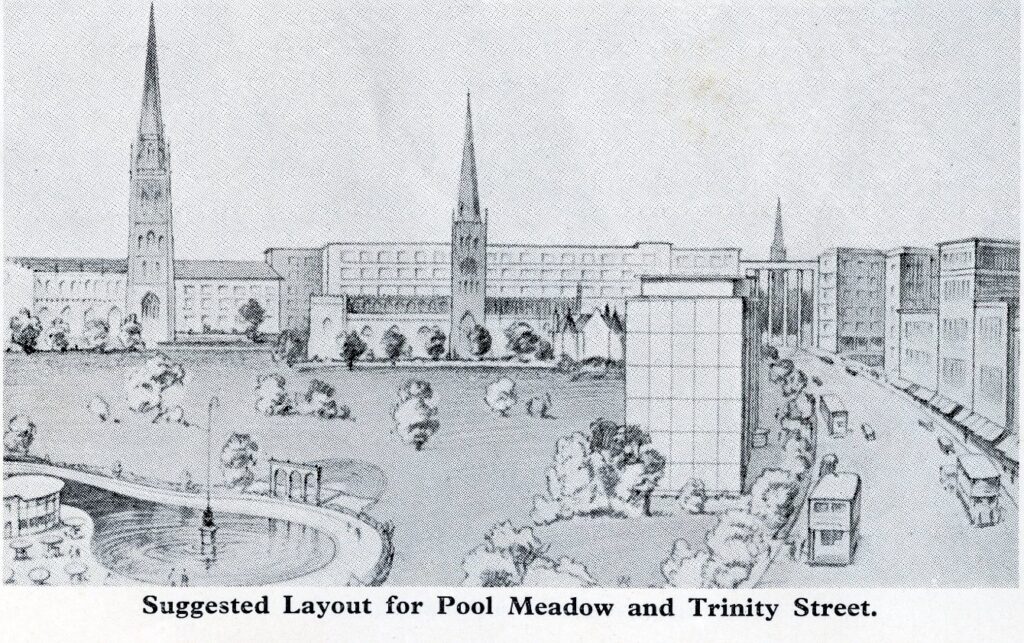
Historian and CovSoc Committee member, David Fry, has been studying past editions of the Alfred Herbert Newsletter. These newsletters are much more than just a works newsletter and reveal a lot about the thinking in the city at the time they were written. The article below is extracted from 1955 editions of the newsletter, looking back at 142, and are written in the words of the authors. David writes….
Raising money for Russia at the same time as looking beyond the war – some echoes, if ironic, with 2024. In this extract from the November/December 1955 Alfred Herbert News, looking back at 1942-3, Coventry might have felt like Ukraine today with a never-ending war and the future unclear. But in 1942 Russia was a great friend… and Coventry had a plan!
Came 1942 and with it defeat on every front.
Rommel had counter-attacked brilliantly in North Africa and had regained the greater part of Cyrenaica, the British Forces were in retreat in Malaya, Burma had been invaded by the Japanese and Malta was being savagely and mercilessly bombed. On January 11th, Mr. D. N. Pritt, K.C., M.P. came to the city to open its “Help Russia Week”. Alfred Herbert Ltd. had, however, already launched its own campaign to raise £1,000 for Madame Maisky’s appeal for funds for wounded Russian soldiers, a campaign which was so successful that in the allotted fortnight no less than £2,370 was raised.
Even as Drake had calmly played bowls while the Invincible Armada swept up the Channel to put Britain to fire and the sword so in the face of this latest disaster did the men of Coventry raise their old battle cry of “The Old Five” at Coundon Football Ground where the City was playing a team of Czechs in aid of Coventry’s Warship Week.
A few days later thousands of loyal citizens of Coventry were heartened by the sight of their King, who, with his Queen, toured the city.
His Majesty visited the ruined Cathedral as well as the ruined Hospital, inspected Civil Defence personnel and also visited a local factory.
Later, at the Council House, both the King and the Queen showed the liveliest interest in the plans for the reconstruction of the city and the King expressed the wish, alas, never to be fulfilled, that he could visit the city later and see the reconstruction in reality.
Before leaving, Queen Elizabeth, with her typical thoughtful generosity, left 11 Ibs of tea—which had been a personal gift to her from America—to be distributed in Coventry.
It was at this time that Coventry Council received a report on the condition of Grey Friars Church spire. This had been seriously damaged in the blitz that had gutted the church and concern was felt lest it had to be demolished.
To the great satisfaction of everyone it was learned that after the necessary repairs had been completed Coventry would still be able to keep its ancient title of the City of Three Spires.
Twice during its long life has this venerable tower and spire been bereft of its church. In its first period of isolation it earned for itself the unenviable title of the “Tallest Pig-sty in Europe”. It would now seem that its second period is to earn it the equally unenviable title of “The Tallest Car Park Attendant in Europe”.
On the 22nd of April, Sir Alfred Herbert opened the new two-ward block of the Coventry and Warwickshire Hospital at Keresley, the wards of which had been named after him and Lord Nuffield. While no-one doubted the need for these wards their appearance, low and squat to resist bomb blast, was a distinct shock after the airy gracefulness of the previous hospital.
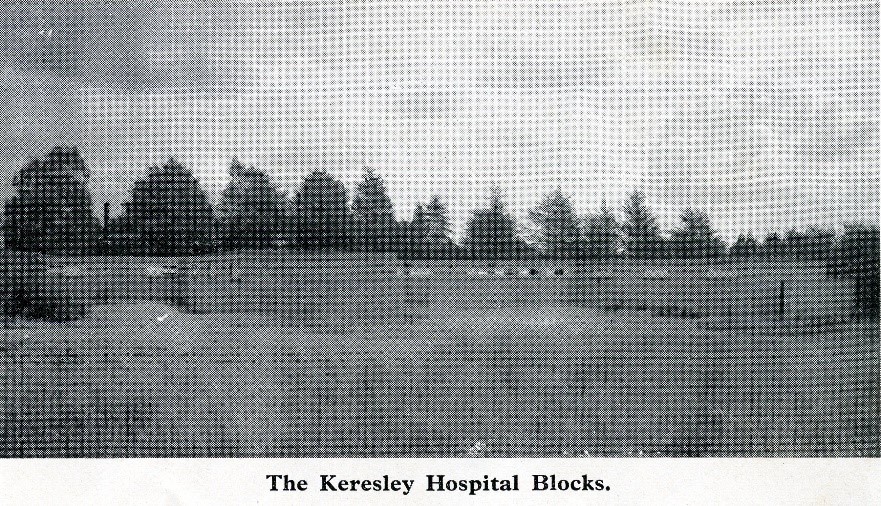
During the following month at the Diocesan Conference it was decided that the Cathedral should be rebuilt to conform to its original appearance and Sir Giles Gilbert Scott was asked to prepare the necessary building plans.
On June 19th Coventry was once more honoured by a Royal visit on the occasion of the Princess Royal’s tour of the emergency hospitals of Warwickshire.
Still the toll of disaster mounted. On August 16th an attack on the French coast was repulsed with ghastly losses, on the 25th the nation was stunned by the news that H.R.H. the Duke of Kent had been killed in a flying accident while by the end of the month the stupendous battle of Stalingrad had reached such ferociously horrific proportions that the mad holocaust seemed like to engulf and annihilate all Russia.
It was while these world-shaping battles were raging on every side that a minor battle took place in the City Council. It had been suggested that the Market Hall tower, standing forlorn in a waste that had once been Broadgate should be demolished. There was a great deal of opposition to this suggestion and it was not until after much argument that the course was finally adopted.
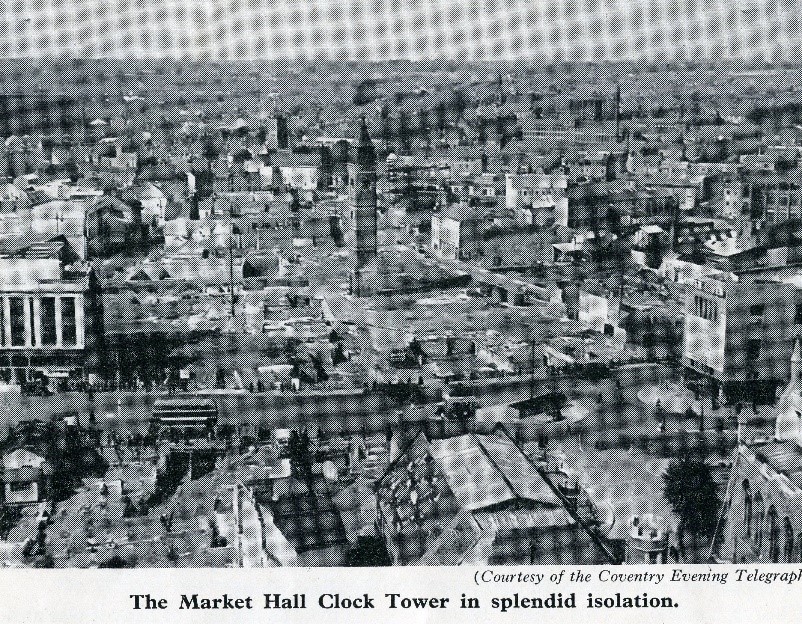
Day after day throughout that long, grim October one name alone was in the thoughts of the world—Stalingrad.
Stubbornly, desperately, the Russians poured out their life-blood in defence of every stick and stone – ravening with insensate fury the Nazis unstintingly poured the flower of their manhood into the blazing inferno.
Again briefly Coventry glanced at its own affairs for on November 9th a very historic event was enacted in that city. For only the second time in 600 years a woman, Mrs. Alderman Emily Smith, was elected Mayor.
On November 20th the heroism of the Russians was personified in the visit to Coventry of a Russian woman sniper, Lieutenant Lyndmilla Pavlichenko, who had been responsible for the deaths of 309 German soldiers.
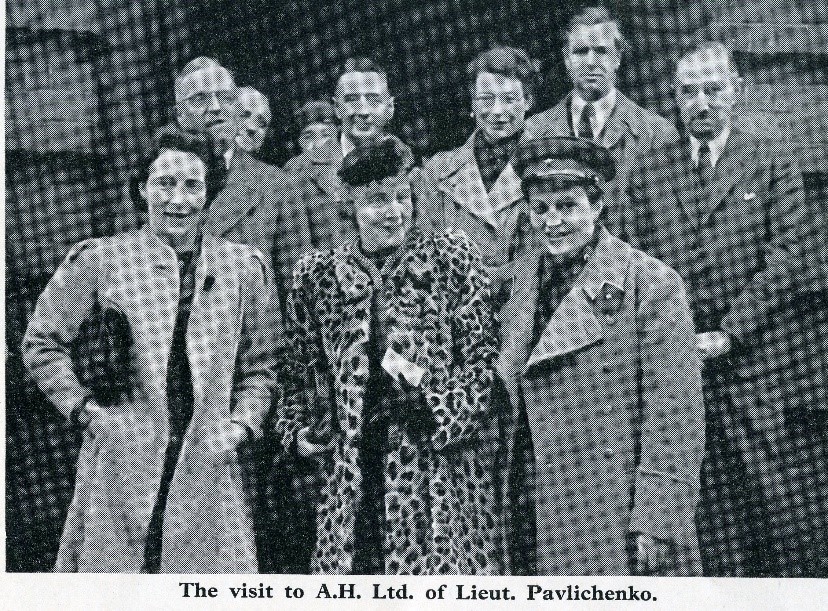
After a civic reception at the Council House where she was handed a cheque for £4,516 to provide three mobile X-ray units for the Russian army, Lieutenant Pavlichenko visited the works of Alfred Herbert Ltd. and the Standard Motor Co. Ltd.
On January 28th the demolition of the huge gutted and bomb-scarred ruins of Owen Owen’s building commenced and less than a week later Moscow triumphantly announced that the German armies had been completely overwhelmed at Stalingrad where the staggering total of 90,000 prisoners had been taken.
February 20th saw a most unusual ceremony conducted in Coventry. On that day, amid the ruins of his cathedral a new bishop was installed.
Surely few people can have witnessed such a scene, at once impressive and macabre, as with solemn dignified splendour, Dr. Neville Vincent Gorton was enthroned Bishop of Coventry.
Four days later Lord Horder visited the city on the occasion of the opening of the new Crematorium at Canley.
As a corollary to this ever increasing use of aircraft came the call for a ‘Wings for Victory’ week.
Coventry’s week was fixed to start on May 15th, and its target 2 million pounds. As before, Coventry surged above the total and by the end of the week £2,400,000 had been subscribed.
Faster and yet faster the war turned in favour of the Allies. On Sept. 3rd the fourth anniversary of Britain’s declaration of war Italy was invaded and surrendered. But the German armies in Italy did not, and grimly they opposed the Allied forces.
In Coventry it had been decided to re-open Bablake School and recall the scholars who had been evacuated to Lincoln.
It was at this time too that the proposed Re-development Plan for Coventry had been published.

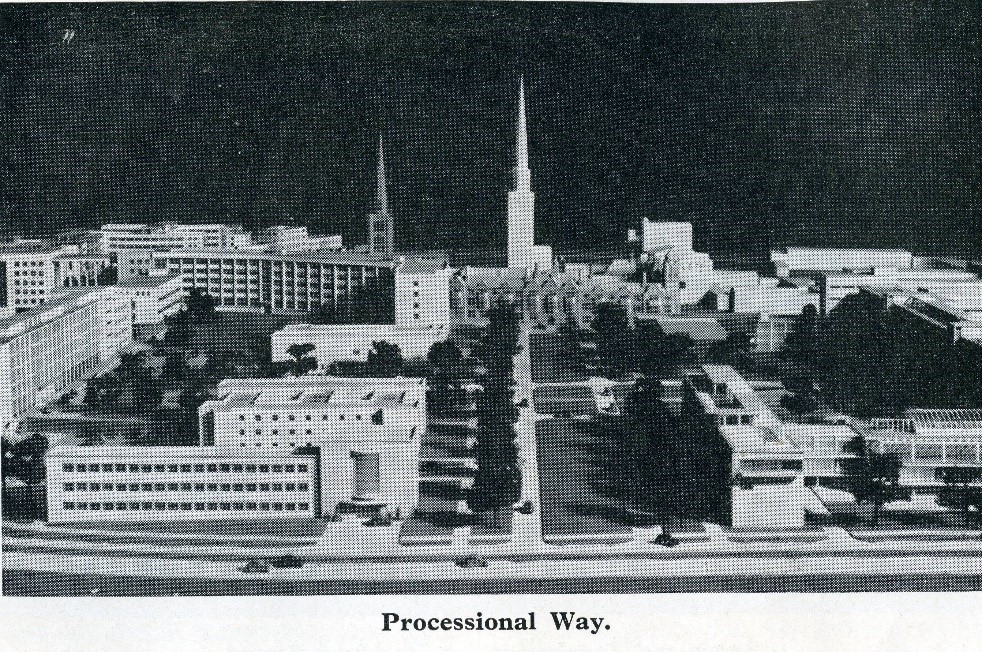

And such a plan! The grand vista of Broadgate, the wide sweep of Theatreland in Corporation Street, the new civic buildings “laid out rather like a University Campus”, the new Precinct—it all seemed a beautiful, impossible dream. And yet . . . it had to be rebuilt, so why not?
